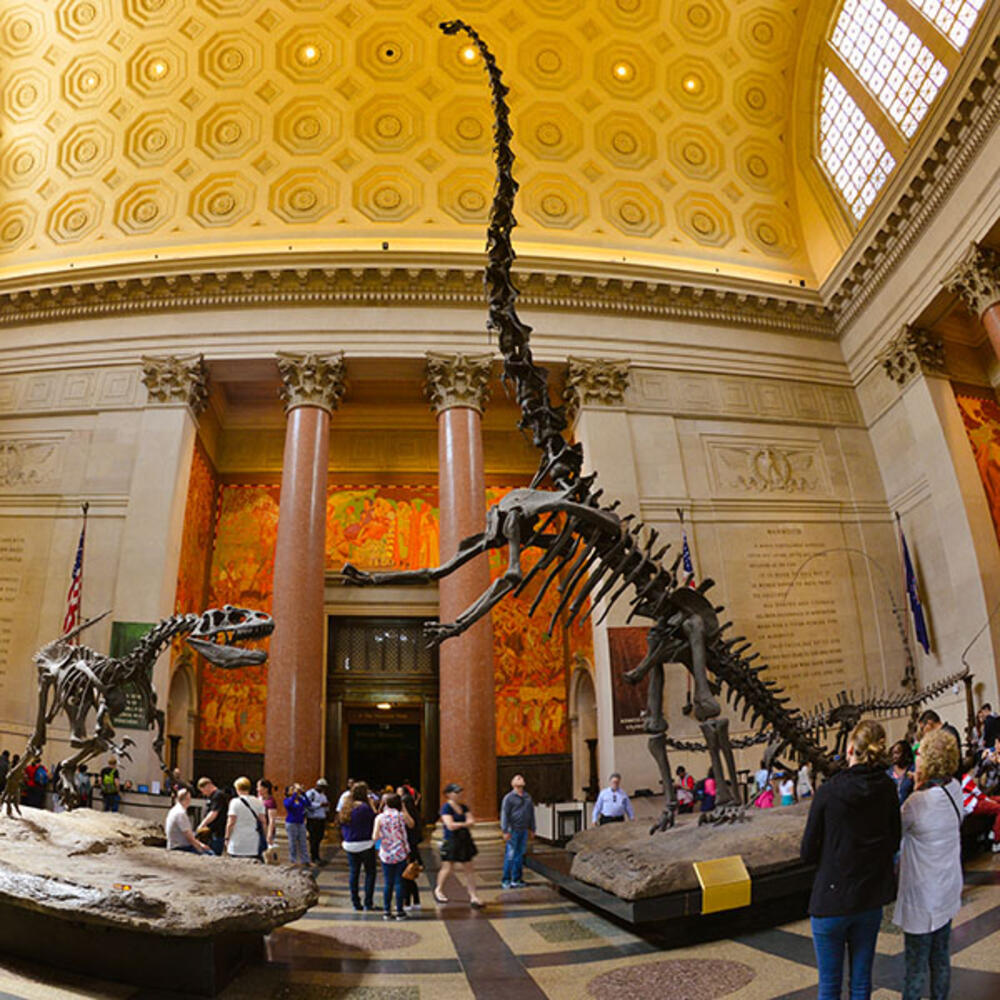Hall of Primates
The Hall of Primates explores the mammalian order that includes apes, monkeys, and humans. Primates range in size from the pygmy marmoset to the gorilla, and include species that feed on insects, fruit, leaves, and sap. The hall also exhibits some close relatives of primates, such as the rodent-like tree shrews.
The hall is divided into families, with displays of skeletons, mounted specimens, and artwork that trace both shared characteristics and those unique to each group. For example, while many primates such as spider monkeys have long tails they use for grasping, apes, which have hands that are specialized for swinging from trees, do not have tails.
The relationship of the human family to other primates is considered through comparisons of such characteristics as posture, the amount of body hair, and the shape of the hand, especially the thumb.
This hall is included with any admission.
Enjoy free tickets for General Admission, special exhibitions, giant-screen movies, planetarium shows, and more!
